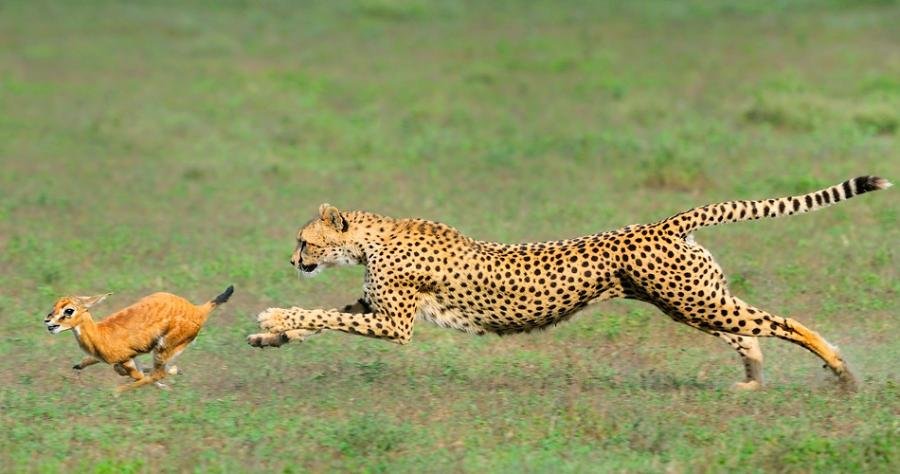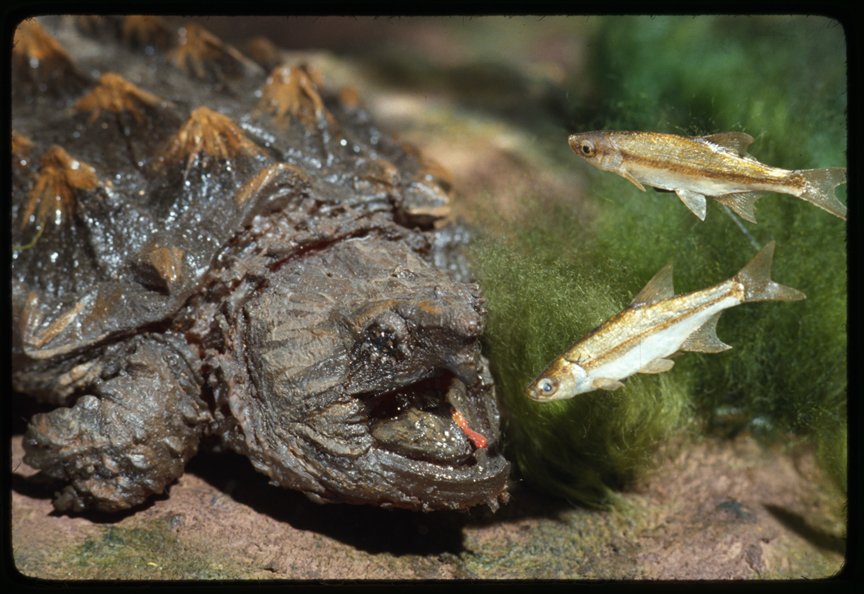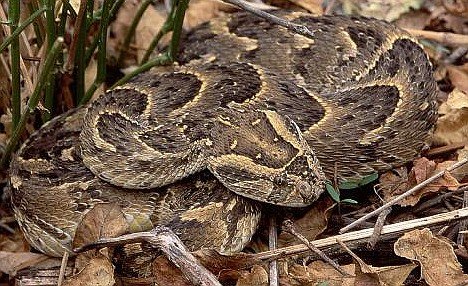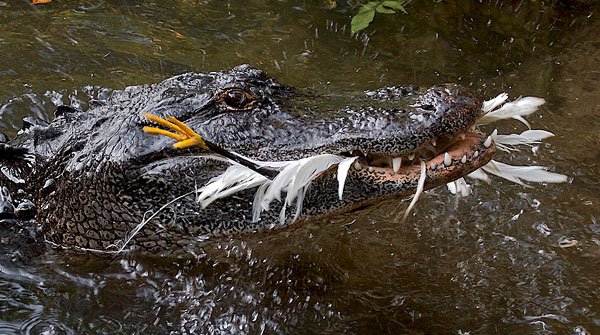
In the animal world, hunting is a necessary gamble. If a predator wants to survive, it must hunt its prey on a routine basis, but there is a major cost associated with the hunt. Tracking, chasing and subduing prey of any kind requires a major energy expenditure and this can be incredibly risky: not every hunt is successful (in some species, success rates may be as low as 5-10%). A hunt that doesn't end in a kill is a major defeat for a predator as the energy lost could negatively impact the next hunt and those that follow (each failed hunt often decreases the success of the next...eventually, they are out of energy and out of luck). But the potential reward is worth the cost; a successful kill will replenish their energy reserves, often making the predator more successful in their next hunt. Predators with low capture rates tend to die out from starvation, unable to replenish the energy wasted on their failed hunts, while the better hunters are more likely to survive thanks to their efficiency (and full bellies!).

Reptiles are no different, and have developed different hunting styles to achieve success when hunting. Some species of snakes and lizards are active hunters, running down their prey with bursts of speed and over powering them. Other species, such as crocodiles, use camouflage to stealthily sneak into striking range of their target, disguised as nothing more than a floating log. And then there are the ambush predators; for these guys patience really is a virtue. They wait, silently and vigilantly, for hours, days or even weeks at a time for prey to come just close enough to strike. It's a simple method, but an effective one; their passive, almost lazy, hunting style conserves energy so a failed hunt is not a devastating to their energy reserves.

The sit-and-wait method is all well and good...as long as prey comes close enough to catch. But ambush predators face the possibility of prey not straying close enough for them; even just a few feet is the difference between a full and empty stomach. And though their slower hunting method conserves energy, eventually their stores will begin to diminish if they are unable to catch their prey (just being alive requires energy regardless of whether you are active or not). As a result, some of these predators have taken things into their own scaly hands, using lures to 'fish' for their prey and draw them in closer.

Alligator snapping turtle: Perhaps one of the most well-known lure-ers, snapping turtles are known as the 'lazy fishermen' of North America. These hulking brutes are ambush hunters and are not shy about striking at most things that swim just a little too close. They have an impressively long neck (up to 1/3 of their total body length) that can extend in the blink of an eye, and a powerful beak that is seemingly impossible to escape once grabbed. Frogs, snakes, birds, mammals and especially fish are all on the menu for these giants; if the food is small, it's gulped down in a single bite while larger prey is shredded using sharp, powerful claws (here's a video of a snapping turtle hunting a porcupine). The alligator snapping turtles of the southern United States have developed a unique hunting lure; sitting on the bottom, the turtle rests with its mouth wide open. Its tongue is shaped like a little red worm, and wiggles wildly in the turtles mouth, catching the eye of passing fish. Prey is lured in to grab the tasty morsel and the turtle chomps down with viscous force; the hunter has become the hunted.

Puff Adder: One of the deadliest snakes in Africa, the puff adder is not an animal you want to mess with. Fortunately, the puff adder is not an active or particularly speedy species of venomous snake, instead the adder is a relatively laid back ambush predator. The serpent is at a major disadvantage compared to other snakes; unlike many venomous species that have a large striking range (some up to 1/3 or more of their total body length), the puff adder seems capable of only striking about one or two head lengths, approximately 5-10 cm (this is a tiny strike). In order to lure prey into this very precise range, the adder uses lingual luring, much like the snapping turtle. The snakes have been observed wiggling their tongues outside of their mouths for a dramatically longer period of time than they do when just sensing their surroundings (this is the only time it's been witnessed in a terrestrial snake). What's most interesting, is that the adder seems to easily distinguish amphibians from its other prey; the tongue looks very similar to an invertebrate that frogs hunt, and they only seem to employ this method of luring when a frog is the intended target (Source).

Northern Copperhead: Not all lures are employed at the front of the animal; some species use their own tails as bait. Northern copperheads are born with the same dull brown coloration of the adults with one notable exception: their bright yellow-tipped tail. The tail is used in a behavior that is known as 'caudal luring' in which the tail is wiggled to stimulate a feeding response in prey (many species besides the copperhead employ this clever tactic). The young copperheads feed on insects, especially caterpillars, and they wiggle the bright attracting appendage to lure their meal in. In other species, caudal luring may attract birds, lizards, amphibians, fish, small mammals and even other snakes.
<iframe src="https://player.vimeo.com/video/36010097" width="640" height="360" frameborder="0" webkitallowfullscreen mozallowfullscreen allowfullscreen></iframe> Video Link
American Alligator: A lure doesn't have to be part of one's body to be effective. Just as humans use fishing poles and lures to catch fish, alligators use tools of their own to bring in potential prey. During the nesting season, birds begin collecting small branches and sticks en mass to build their nests and begin laying their eggs. Alligators are very much aware of the birds activity, and have discovered a way to use it to their own advantage. They will collect sticks themselves and stack them on their nose; an unlucky bird sees these perfect building sticks sitting on what appears to be a fallen log in the water. When the bird lands for the stick, with a flick of the head, the alligator has acquired an easy meal at little energy expense. And because the alligators are using sticks to acquire their food, the behavior is catagorized as a form of tool-use. Source

Just like any animal, reptiles are crafty creatures that will always evolve new hunting techniques. Predators strive to achieve more successful hunts requiring less energy, and those that are able to successfully lure in prey have a solid advantage over those who don't. They don't require the sheer speed and power of active hunters, and don't have to rely on chance or luck like other ambush predators. Luring may emerge as a more common form of hunting as these animals exhibit a high rate of success, enhancing their own survival.
